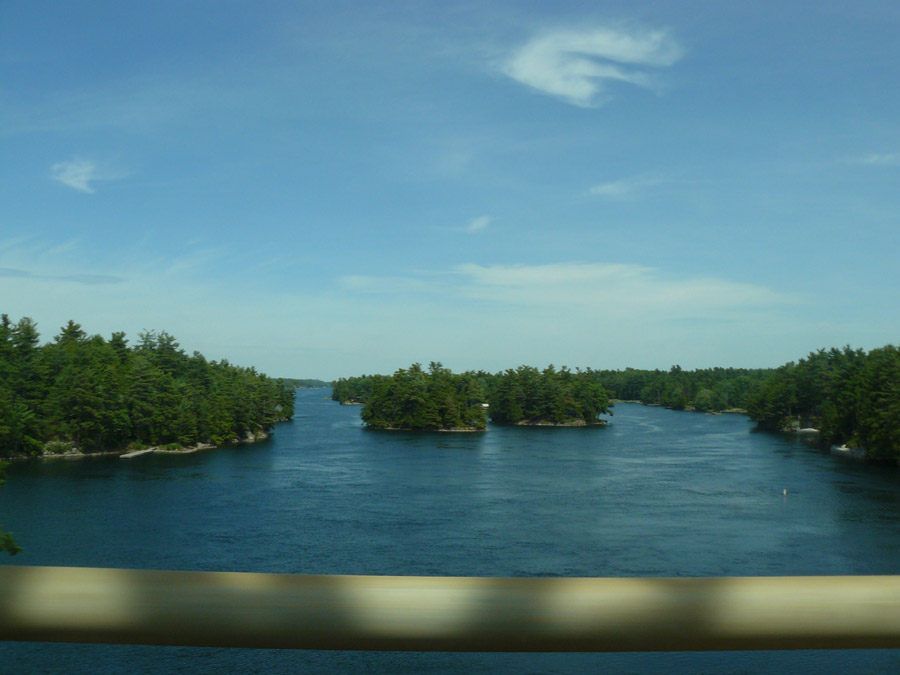 Location Taken: Thousand Islands, Canada
Location Taken: Thousand Islands, Canada
Time Taken: June 2010
I took this photo from the back seat of our car, while we were crossing the appropriately named Thousand Islands Bridge between the US and Canada. This is a series of bridges going between islands on the St. Lawrence River. This particular bridge isn’t the one with the border, but is the next one further north. Still, it solidly feels part of that nebulous “not quite in either country” zone you find near border crossings.
I first went to Canada as an adult, when I was, what, 23 or so? Before that, I had not left the country. For most people in the US, leaving the country just isn’t something you do. Aside from a few areas on the west coast and a small handful of cities such as Detroit, the borders between the US and its neighbors are pretty rural. And we’re such a large nation that leaving it usually requires a lengthy trip, and frequently an airplane. In general life, staying in the US is solidly easier than leaving. It’s no wonder so many Americans are rather iffy on their world geography. It just doesn’t affect their day-to-day life at all, so they have no reason to use the knowledge. It’s only oddballs like me who pay attention.
I’m more knowledgeable than the average American about geography. Most of that’s temperament, and the natural tendency to love and understand maps I have. I also love learning about other societies, other geology, other weather patterns, all the sorts of things that actually do lead you to looking outside the US. I’m also fond of a lot of foreign media, especially that from Japan. I’m quite fond of Japanese video games, music, and anime, after all. Still, even then, it can be a little challenging to remember that other parts of the world act differently than what I’m used to. Though in some cases, I’m more jealous than anything. For instance, I would love it if we actually had decent public transportation here. But, alas, we’re both a very large country and a very car-centered society, neither of which encourages the government to spend money on awesome stuff like trains.
The State system’s a bit of an odd one if you think about it. On some levels, each state acts separately, with its own laws, policies, taxes, etc. But even with all the differences you can find, each state still feels somewhat similar. Crossing the border between states is barely noticeable. Just a sign on the side of the road, and possibly a speed limit change. Oh, and perhaps a bump as you switch to a different schedule for road maintenance, with one side being much newer than the other. It’s nowhere near the event of an international crossing. There, you’re checked out, you present your passport, and so on. It’s really not that long, but it feels long.
And yet, both borders are figments of our collective imagination, lines drawn on a piece of paper that we all agree to pretend matters. There’s no line drawn along every border in real life. If you were walking in a non-inhabited region, you wouldn’t realize you crossed a border (unless you knew exactly where you were at every moment, of course). Such funny things we humans are, making imaginary lines matter in our lives.
